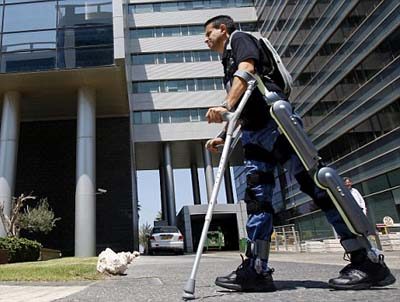Computer learning-electrical stimulation combo may give paralysed people better muscle control
 Washington, March 19: A University of Florida researcher that paralysed people can be enabled to control their limbs in more precise and life-like manner by combining computer learning technology with electrical stimulation, a simple technique that has been in use for decades to prompt muscles to contract.
Washington, March 19: A University of Florida researcher that paralysed people can be enabled to control their limbs in more precise and life-like manner by combining computer learning technology with electrical stimulation, a simple technique that has been in use for decades to prompt muscles to contract.
Warren Dixon, an associate professor of Mechanical and Aerospace Engineering, agrees that his research is still exploring the fundamentals, but insists that his progress so far suggests computer-adapted electrical stimulation could one day be ready to help scores of stroke and cord injury sufferers annually.
“It’s an adaptive scheme to do electrical stimulation more efficiently, with less fatigue and more accuracy,” said Dixon, explaining that existing techniques did little more than apply a set current to a designated muscle.
He points out that stroke sufferers who work at regaining the ability to walk often unconsciously drag their toes, causing them to stumble.
He says that this problem can be solved by making a wearable, pacemaker-sized device that would deliver just the right stimulation to the calf at just the right moment in a person’s gait, lifting the toe just enough to avoid a stumble and walk naturally.
The researcher reckons that the device would adapt to individuals, adjusting itself to weight, activity and diet.
According to him, such a device might even act as a kind of robotic therapist to the patient, guiding him or her in the proper action while very slowly backing off its own electrical input.
Dixon concedes that the current state-of-the-art rehabilitation devices show the potential. He, however, adds that such devices only apply a predetermined and relatively high voltage to a designated muscle, which means that while the muscle may move, it can easily fatigue, becoming less responsive and sore.
He and his graduate students are developing methods aimed at improving that model using techniques of “adaptive learning”, or giving a computer the ability to learn from a patient’s actions and reactions and adjust its muscular stimulation accordingly.
“We start with a desired trajectory, we do the leg extension, encode that in a computer and measure the motion. Then we develop control methods to intelligently stimulate the muscle to make it behave the way it should,” Dixon said.
His recently authored a paper accepted in the IEEE Transactions on Neural Systems and Rehabilitation Engineering, and its publication is anticipated for this summer. (ANI)